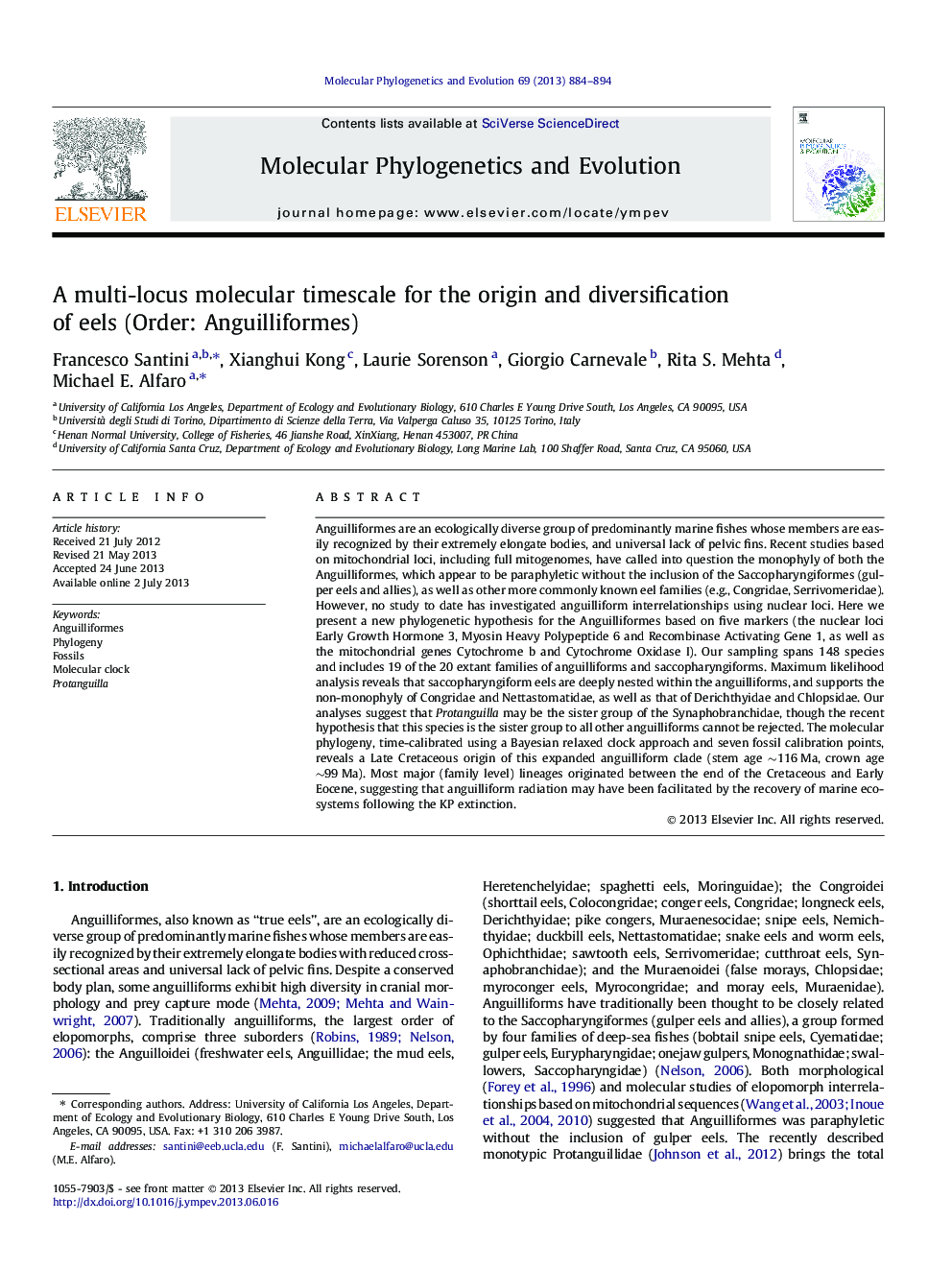| کد مقاله | کد نشریه | سال انتشار | مقاله انگلیسی | نسخه تمام متن |
|---|---|---|---|---|
| 5919700 | 1164270 | 2013 | 11 صفحه PDF | دانلود رایگان |

- We infer evolutionary relationships for eels fishes (Order Anguilliformes).
- We provide a new timescale for interpreting diversification of anguilliforms.
- Some major eel families are shown to be paraphyletic.
- Anguilliforms may have diversified as part of a post-KT marine recovery.
Anguilliformes are an ecologically diverse group of predominantly marine fishes whose members are easily recognized by their extremely elongate bodies, and universal lack of pelvic fins. Recent studies based on mitochondrial loci, including full mitogenomes, have called into question the monophyly of both the Anguilliformes, which appear to be paraphyletic without the inclusion of the Saccopharyngiformes (gulper eels and allies), as well as other more commonly known eel families (e.g., Congridae, Serrivomeridae). However, no study to date has investigated anguilliform interrelationships using nuclear loci. Here we present a new phylogenetic hypothesis for the Anguilliformes based on five markers (the nuclear loci Early Growth Hormone 3, Myosin Heavy Polypeptide 6 and Recombinase Activating Gene 1, as well as the mitochondrial genes Cytochrome b and Cytochrome Oxidase I). Our sampling spans 148 species and includes 19 of the 20 extant families of anguilliforms and saccopharyngiforms. Maximum likelihood analysis reveals that saccopharyngiform eels are deeply nested within the anguilliforms, and supports the non-monophyly of Congridae and Nettastomatidae, as well as that of Derichthyidae and Chlopsidae. Our analyses suggest that Protanguilla may be the sister group of the Synaphobranchidae, though the recent hypothesis that this species is the sister group to all other anguilliforms cannot be rejected. The molecular phylogeny, time-calibrated using a Bayesian relaxed clock approach and seven fossil calibration points, reveals a Late Cretaceous origin of this expanded anguilliform clade (stem age â¼116Â Ma, crown age â¼99Â Ma). Most major (family level) lineages originated between the end of the Cretaceous and Early Eocene, suggesting that anguilliform radiation may have been facilitated by the recovery of marine ecosystems following the KP extinction.
Journal: Molecular Phylogenetics and Evolution - Volume 69, Issue 3, December 2013, Pages 884-894